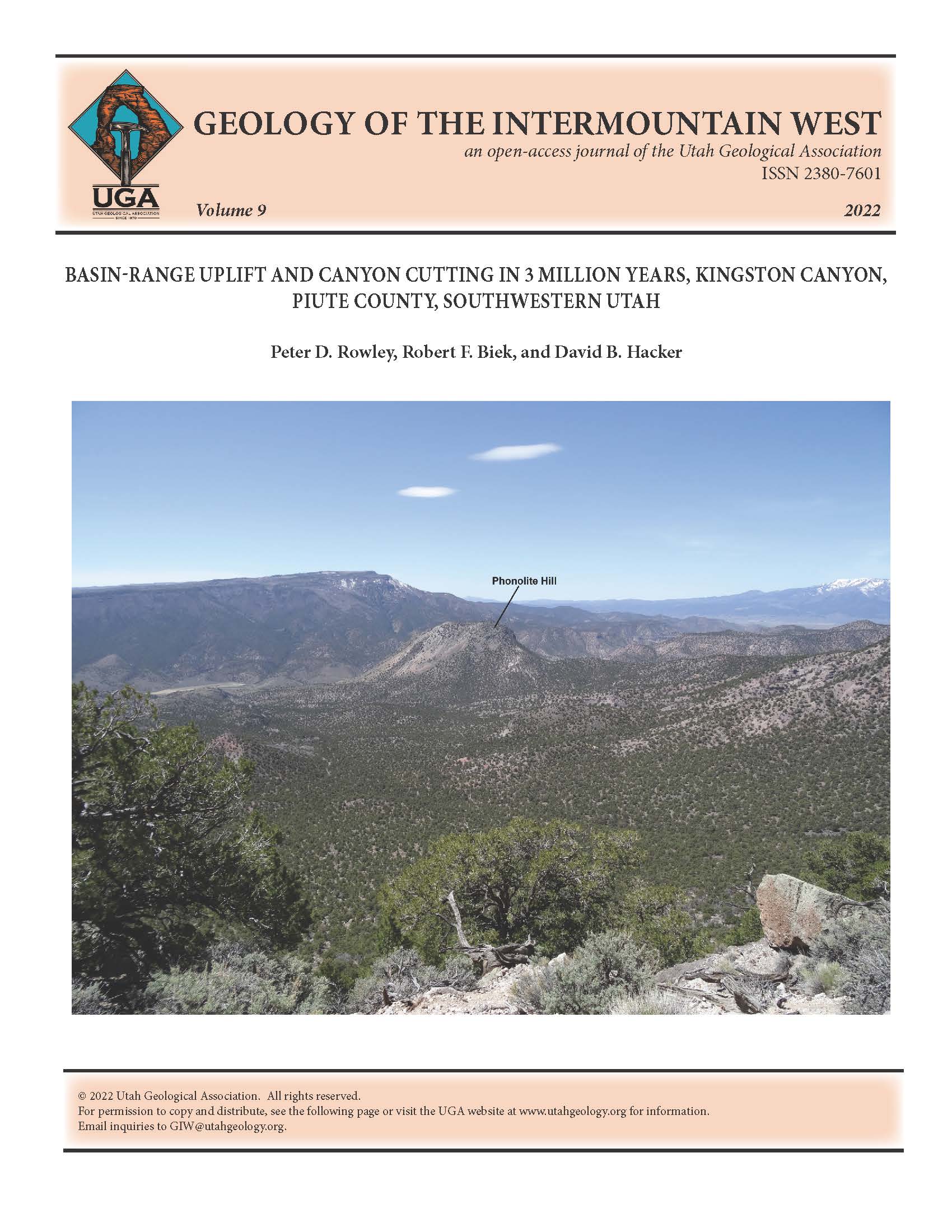Basin-range uplift and canyon cutting in 3 million years, Kingston Canyon, Piute County, southwestern Utah
Abstract
The Sevier Plateau is a gently east-tilted, block-faulted range in the High Plateaus transition zone of southwestern Utah. Part of this range underwent basin-range deformation, including at least 6000 feet (1800 m) of uplift, in a 3-million-year time span. The north-south range, whose southern end is just north of Bryce Canyon National Park, was uplifted and tilted by the Sevier fault zone along the western side. Kingston Canyon is a deep, east-west antecedent canyon that cut through the range and maintained itself during uplift. The deformation took place between 8 and 5 Ma, constrained by isotopic dating of pre-uplift rhyolite flows (8 Ma), now exposed on the crest of the range, and a post-canyon-cutting rhyolite dome (5 Ma), now in the bottom of Kingston Canyon. This episode of uplift and canyon cutting represents the most closely constrained example known in the Great Basin and adjacent transition zone of main-phase uplift by basin-range faults.

Copyright (c) 2022 Utah Geological Association

This work is licensed under a Creative Commons Attribution-ShareAlike 4.0 International License.




